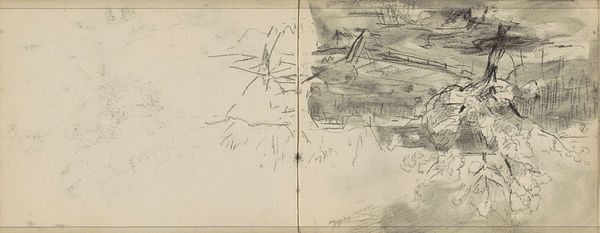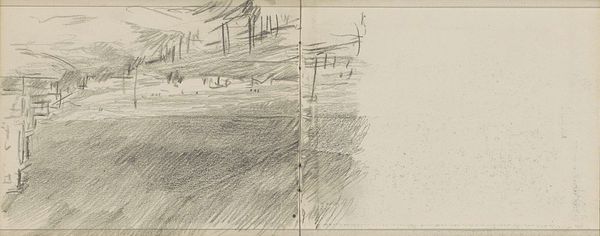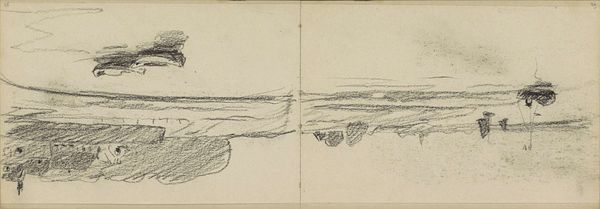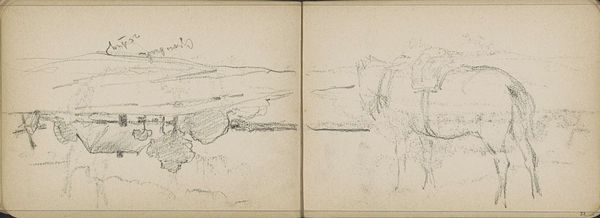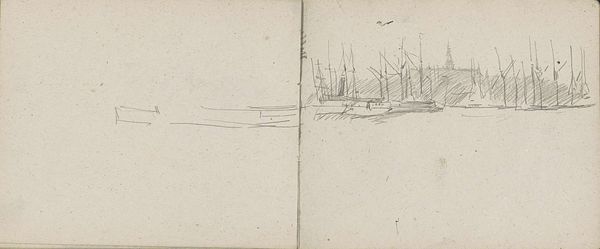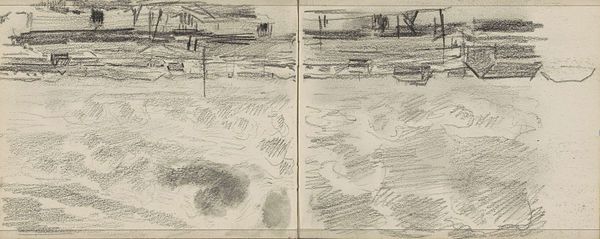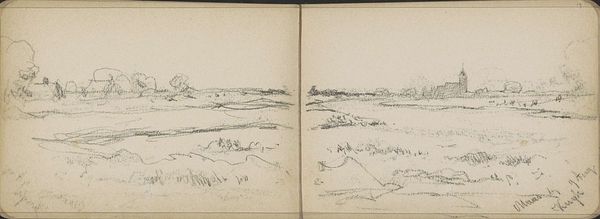
drawing, pencil
#
drawing
#
landscape
#
pencil
#
realism
Copyright: Rijks Museum: Open Domain
Curator: Welcome. We're standing before Johan Antonie de Jonge’s "Landschap met een kerktoren", a pencil drawing from 1909. It depicts a landscape dominated by a church tower. Editor: It has such an unfinished, haunting quality, almost dreamlike. The textures seem smudged, layered – it speaks to the raw potential within something unrefined. Curator: Exactly. Think of the Netherlands in the early 20th century. The rapid urbanization, the changing agricultural practices, would have significantly altered the Dutch landscape. A seemingly simple drawing like this becomes a silent witness to these shifts. What did such drastic transformation mean for the community? For tradition? Editor: I’m drawn to the material choices here, quite literally. The humble pencil; it's an instrument of labor, accessible. De Jonge seems focused on mark-making and using chiaroscuro to build structure. The lines convey movement and a distinct atmospheric quality. Curator: I'm fascinated by what appears absent too. The vastness of the "Landschap", as the title suggests, almost drowns the presence of human architecture within nature. I want to understand what the landscape symbolized for people of the time and de Jonge specifically. Did it mirror a societal move from the familiarity of religion toward what modernity might offer, or remove? Editor: Yes. And what does choosing this particular landscape achieve? Its fields of labor and that central symbol of labor and faith; both seem connected but also distinct. It also seems like he used a double-page sketchbook—an industrial product geared toward the quick capture of scenes of nature. The ready availability of drawing materials democratizes image production. Curator: True. Considering it's only a sketch, there's much unsaid and it is precisely the “gaps” within the picture which compel inquiry into class and rural change as felt from the ground. What could that Church mean to a laborer? What kind of comfort might those material, terrestrial structures provide when confronted with the sublime? Editor: It shows the power of simplicity, wouldn't you say? A landscape articulated by one of the most common materials rendered, ultimately becomes a poignant piece of observation. Curator: I agree completely; De Jonge reminds us that quiet contemplation can provoke the loudest questions regarding our relationship with society and identity.
Comments
No comments
Be the first to comment and join the conversation on the ultimate creative platform.

